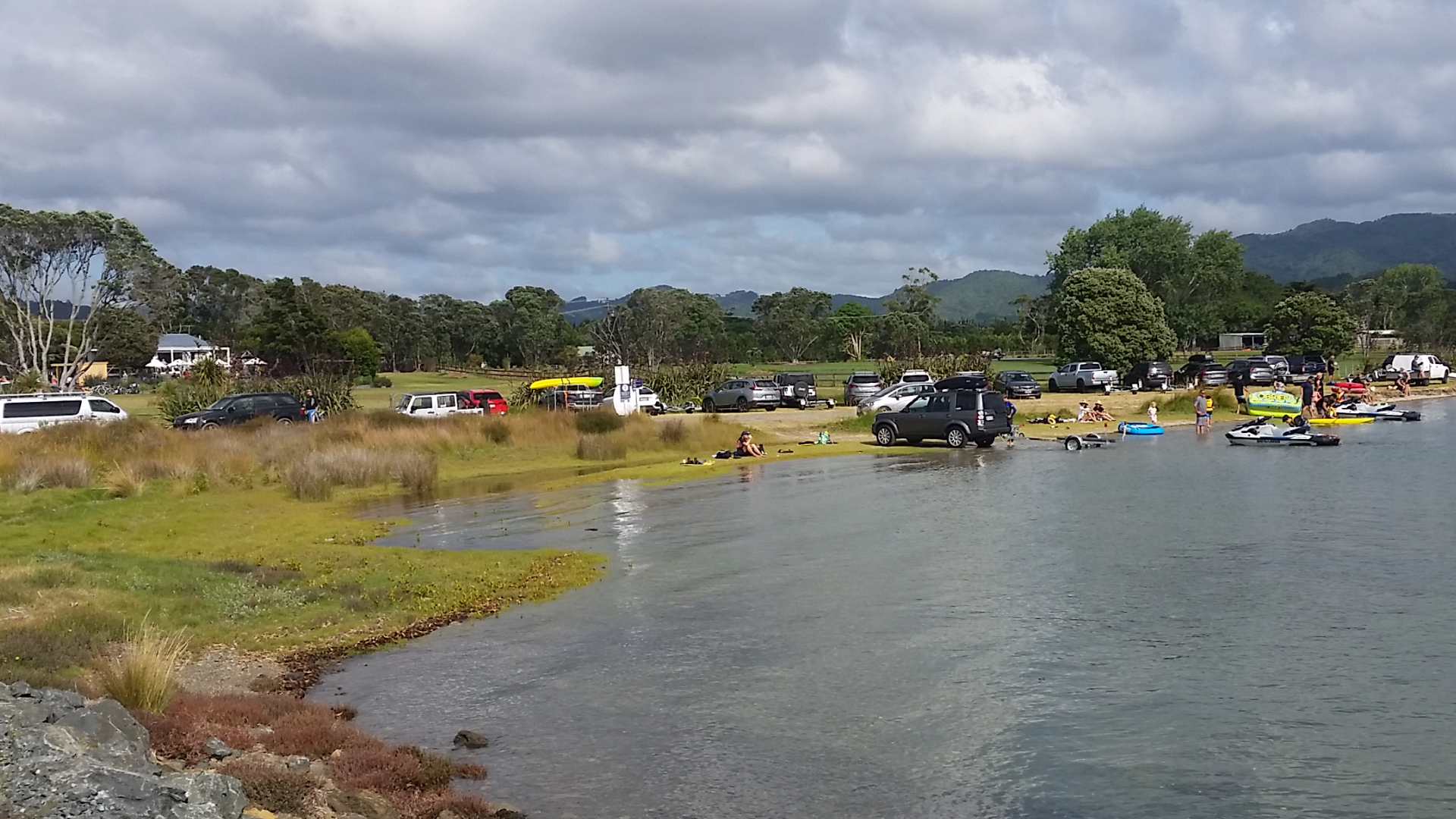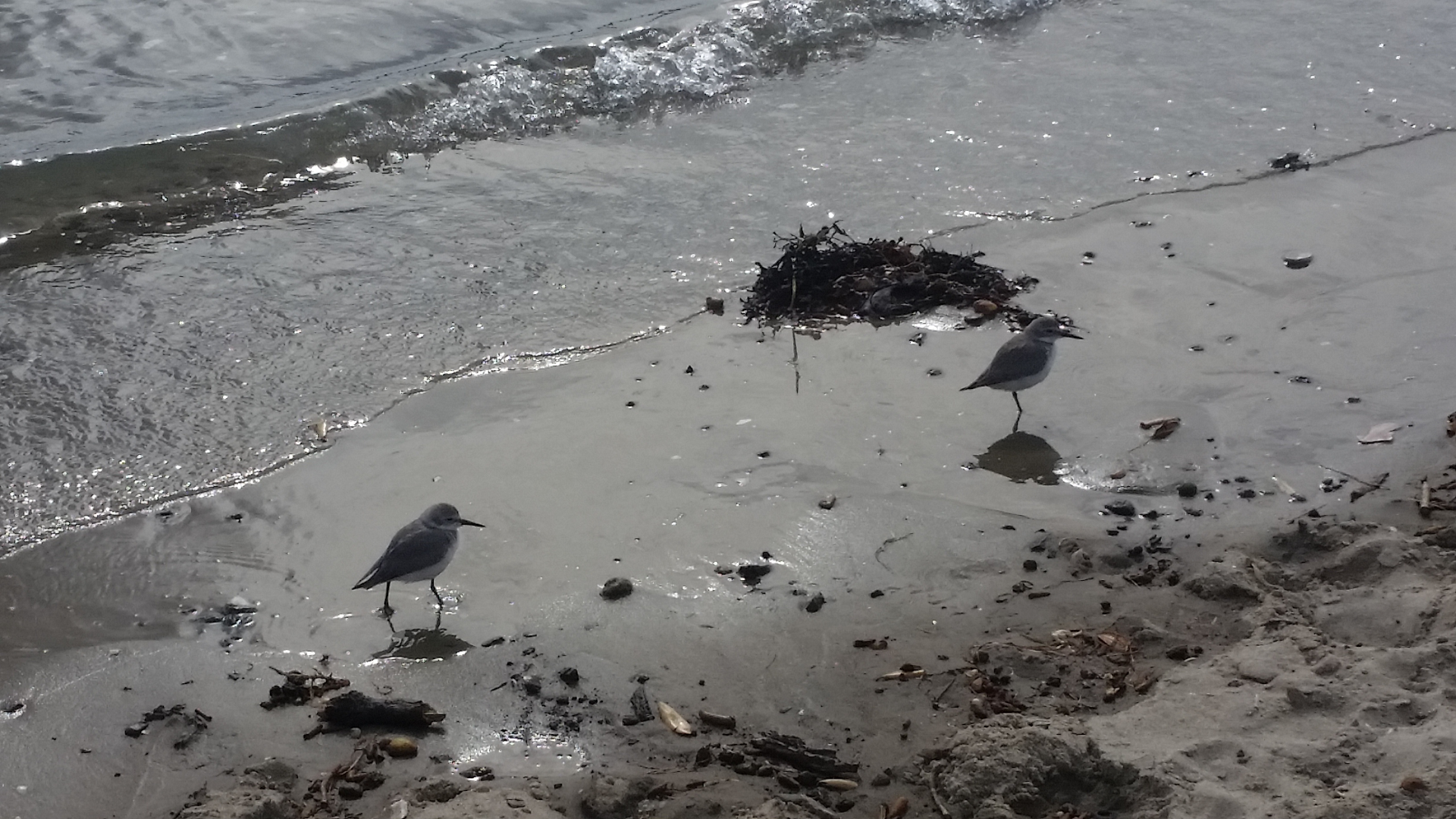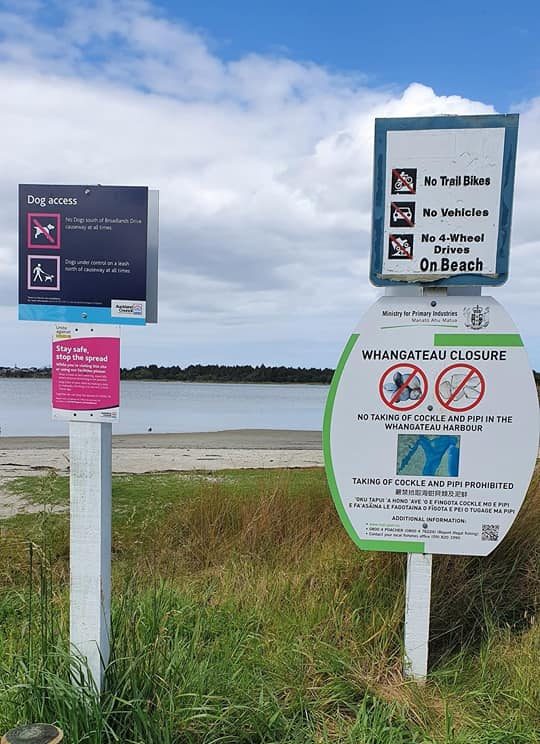While many of us are aware of the sterling efforts of groups such as the Omaha Shorebird Protection Trust and the Omaha trapping team to protect and improve the environment around the Omaha spit, less well-known perhaps are the efforts being made to protect the wider Whangateau Harbour.
For example, Whangateau Harbour Care is a volunteer group set up “to sustain the environment of the Whangateau Harbour and its catchment” – see https://www.facebook.com/WhangateauHarbourCare/.
There are also private landowners dedicated to the protection of the harbour’s shoreline and bird habitats on their own land, such as Lu and Kay Rathe whose property is on the north side of Omaha Flats Road at the western end of the causeway. The Rathe family is well-known locally, having been in the area for many years, and it was Lu’s mother, Ngaire, that specifically set up an Esplanade Strip in 1996.
Showing a vision for the environment ahead of the time, her objective was “the protection of conservation values” on the esplanade, while generously still allowing the continued use of this private land by the public for appropriate leisure activities (ie no vehicles or animals).
However, over the last 25 years or so, the popular spot has progressively become the summertime destination for more and more people along with their cars, trailers and watercraft (including motorised craft) and there has been mounting concern that the shoreline and bird habitats in the area have been suffering accordingly.
Lu Rathe speaks passionately about the family’s concern for the welfare of the bird species in the intertidal zone such as banded rails, Australasian bittern, kingfishers, fernbirds and marsh crakes, for the birds that forage near the foreshore when the tide is out such as New Zealand dotterels, godwits, wrybills, grey-faced heron, knots, royal spoonbills and variable oystercatchers, as well as other species such as Caspian terns and pied shags that forage in the area when the tide is in.
The recent installation by the Council of bollards to protect the area from vehicles, as well as (we understand) new signage, is a genuine and well-meaning attempt by all parties to restore the balance between the needs of the local environment and its wildlife with the opportunity for people to still enjoy safe and sensible leisure activities. We hope this rebalancing is supported and respected by local people and visitors alike.








